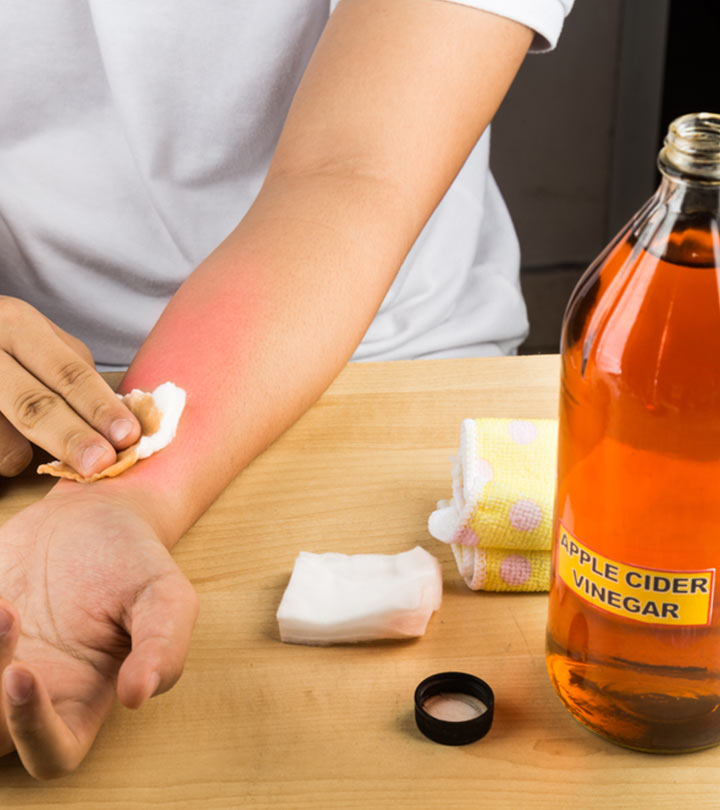The soft food diet is for people who have undergone neck, head, stomach surgeries, or dental issues. This diet allows only soft texture foods and is easy to chew, swallow, and digest.
Soft foods are prepared by chopping, grinding, mincing, and mashing. These foods are also low in fiber content. Read on to know which foods to eat and avoid in a soft food diet, a few delicious recipes, a soft food diet chart, and tips. Scroll down!
In This Article
What Is The Soft Food Diet?
Shutterstock
The soft food diet is a short-term diet plan that gives the digestive system a bit of rest. The foods are generally low-fiber, soft, chopped, mashed, or blended so that there is no need for them to be chewed.
You may need to be on a soft food diet temporarily or permanently, depending on your medical condition. When you are on a soft food diet, you must be careful about what foods you eat. To know what you should eat and avoid, take a look at the following sections.
Did You Know? It is also known as the mechanical soft food diet due to the constant use of equipment like blenders, food processors, and strainers for creating soft food.
What To Eat On A Soft Food Diet
Shutterstock
You must choose foods that are easy to chew, swallow, and digest. But they should also be nutrient-rich. Here’s a list of nutritious foods that you may include in your soft food diet (1):
Veggies
- Well-cooked veggies without skin or seeds
- Mashed potato
- Boiled and mashed veggies
- Vegetable juice
Fruits
- Banana
- Avocado
- Strained fruit juice
- Applesauce
- Canned and peeled fruits
Related: The 15 Best Fruits For Weight Loss
Protein
- Poached or scrambled eggs
- Ground or finely chopped cooked meat and fish
- Canned fish
- Boiled and mashed lentils and beans
- Grated or finely chopped tofu
- Hummus
Grains/Cereals/Pasta
- White rice, mashed
- Egg noodles
- White bread, mashed or finely chopped
- Well-cooked pasta
- Porridge oats
Related: Oat Milk: Nutrition, Health Benefits, And How To Prepare
Dairy
- Milk and milkshakes
- Yogurt
- Cottage cheese, mashed
- Ricotta cheese, mashed
- Crème fraîche
- Ice cream
Dessert
- Jelly
- Gelatin
- Pudding
- Custard with ground or finely chopped fruits
- Very, very, moist cake
- Mousse
Sauces
- Vegetable or chicken stock
- Bone broth
- White sauce
- Cheese sauce
You have a lot of food options in this diet and will not be bored with the sameness. BUT be cautious with a few foods. Here’s a list of foods you must avoid.
Foods To Avoid
Shutterstock
Veggies
- Veggies that cannot be mashed easily like broccoli, carrot, celery, and cauliflower
- Fried potatoes
- Kale or beetroot chips
Fruits
- Fruits, raw or cooked with the peel
- Pear and apple
- Dry fruits
- Pineapple
- High-fiber fruits such as sapodilla
- Fibrous fruits such as mango
- Fruit with seeds, like blackberries and strawberries
Related: 14 Side Effects Of Eating Too Many Bananas
Protein
- Fatty and overcooked meat
- Fried meat or fish
- Processed meat like sausage, salami, and chorizo
- Beef jerky
- Hot dogs
- Peanut butter
- Seeds
- Cooked, whole lentils or beans
Grains/Cereals/Pasta
- Corn
- Popcorn
- Bagel
- Sourdough bread
- French bread
- Toast
- Unsoftened cereals
- Toasts and crackers
Dairy
- Ice cream and yogurt with nuts, coconut, fruits with skin or seeds, and granola
Dessert
- Pie
- Crumble
- Dry cakes
- Peanut butter cups
Sauces
- Hot sauce
- BBQ sauce
You must avoid foods that can potentially irritate your stomach and/or are difficult to chew and swallow.
Specific health issues require the patients to be on a soft food diet. The next section will help you understand if a soft food diet is for you. Take a look.
Who Should Follow A Soft Food Diet?
Shutterstock
Here’s when your doctor will recommend you to be on a soft food diet:
- Post Surgery
If you have recently undergone head, neck, or stomach surgery, your doctor will ask you to be on a soft food diet (2).
A few examples of these kinds of surgeries are bariatric surgeryi XSurgical procedure in which changes are made to the digestive system to aid in weight loss in obese patients. and gastrectomyi XSurgical removal of the whole or a part of the stomach, commonly done in association with cancer treatment. .
- Dental Problems
Wisdom tooth extraction and loose denturesi XArtificial replacement for teeth and the surrounding gums used to fill in for missing teeth or whole teeth. are very common. During this time, you must be on a soft food diet so that you do not have to make an effort to chew. The soft texture of foods will allow you to swallow the food directly.
This will also prevent the possibility of food getting stuck and infection (3).
- Difficulty Swallowing
In cases of difficulty in swallowing or dysphagia, doctors recommend consuming soft foods. The soft, liquidy texture of the food will allow you to consume it without putting too much stress on the muscles that aid swallowing (4), (5).
- Cancer Treatment
Radiotherapyi X Disease treatment using ionizing radiation. Usually used to eliminate malignant cells in cancer treatment. and chemotherapyi XThe treatment of fast-growing cancer cells using powerful drugs. May be done to cure, prolong life, or reduce symptoms. mostly cause inflammation of the digestive tract (6). This condition is also known as mucositis, and patients are recommended to be on a soft diet during this time.
StyleCraze Says
Eat small and consistent meals throughout the day to allow your body to digest the food easily.
Now, the question is, how to prepare soft foods? Find out in the next section.
Best Tips For Preparing Soft Foods
- Wash and peel the veggies and fruits.
- Cut the foods (including meat, eggs, tofu, and cottage cheese) into small pieces.
- Cook the veggies, meat, fish, lentils, and beans until they are soft.
- Puree the foods using a blender.
- Pass the soup veggies through a sieve.
- Do not keep any lumps in mashed potato, veggies, or fruits.
- Cook egg scramble with butter or crème fraîche.
- To prepare sauces, add milk, cream, and/or melted cheese.
- Add stock to your food to moisten it.
- Moisten bread with milk or soup.
Now that you know which foods you can consume and how to cook them, let me give you a few quick soft food diet recipes to try. Scroll down.
Yummy Soft Food Recipes
1. Banana Oatmeal Smoothie
Shutterstock
Prep Time – 5 mins; Cooking Time – 3 mins; Total Time – 8 mins; Serves – 1
Ingredients
- 1 ripe banana
- 3 tablespoons porridge oats
- 1 cup low-fat milk
- 1 drop of vanilla essence
How To Prepare
- Blitz the oats in a dry blender jar.
- Add milk, banana, and vanilla essence.
- Blitz well (make sure that there are no banana lumps).
- Pour into a glass or bottle and drink up.
2. Mashed Potato
Shutterstock
Prep Time – 15 mins; Cooking Time – 45 mins; Total Time – 60 mins; Serves – 2
Ingredients
- 2 large potatoes, peeled and halved
- 4 tablespoons crème fraîche
- 1 tablespoon unsalted butter
- 2 tablespoons cottage cheese, pureed
- Salt to taste
How To Prepare
- Place the potato halves in a large soup pot containing water.
- Close the lid and let the potato boil and become soft.
- Take the potatoes out with a ladle or fork.
- Peel the potatoes and toss them into a large bowl.
- Use a masher to mash the potatoes well.
- You can also use the back of the fork to mash the potatoes.
- Add in the crème fraîche, pureed cottage cheese, unsalted butter, and salt.
- Combine well.
- You may add finely chopped herbs, but make sure they don’t irritate your stomach or make it difficult for you to swallow the food.
3. Blended Couscous Mushroom Chicken Soup
Shutterstock
Prep Time – 15 mins; Cooking Time – 25 mins; Total Time – 40 mins; Serves – 4
Ingredients
- 200 g boneless chicken cubes
- 1 cup pearl couscous
- ½ cup button mushrooms, halved
- 3 cups chicken stock
- 1 cup vegetable stock
- ½ cup chopped onion
- 2 inch ginger, grated
- 1 teaspoon garlic powder
- 3 tablespoons fresh cream
- 1 tablespoon unsalted butter
- Salt to taste
How To Prepare
- Add a tablespoon of stock to a soup pot.
- When it starts to sizzle, add garlic powder, grated ginger, and chopped onion.
- Cook until the onion becomes soft.
- Add the chicken and vegetable stocks, chicken cubes, couscous, and salt.
- Cover and cook for 20 minutes over medium flame.
- Use a hand blender to blend the soup.
- Add fresh cream and butter before removing from the flame.
- Serve hot.
Now, the main question is, how long should you be on a soft food diet? Let’s find out!
How Long Should You Be On A Soft Food Diet?
Shutterstock
You will be on a soft food diet as per your doctor’s recommendation. It is best to avoid eating anything solid that might aggravate the pain or inflammation. Yes, being on a soft food diet will be a tad boring, but you must design your meals in a way that there’s a sufficient gap between two meals, and the foods that you consume are tasty.
The soft food diet is a temporary regimen that allows the digestive system to relax. The foods are typically low-fiber, soft, diced, mashed, or blended to eliminate the need to chew. A soft food diet is the best option when recovering from surgery, lowering stomach or GI tract inflammation, and coping with discomfort after wisdom tooth extraction or loose dentures. It aids in absorbing all nutrients and speeds up your recovery. However, make sure you follow this diet only if your doctor recommends it.
















